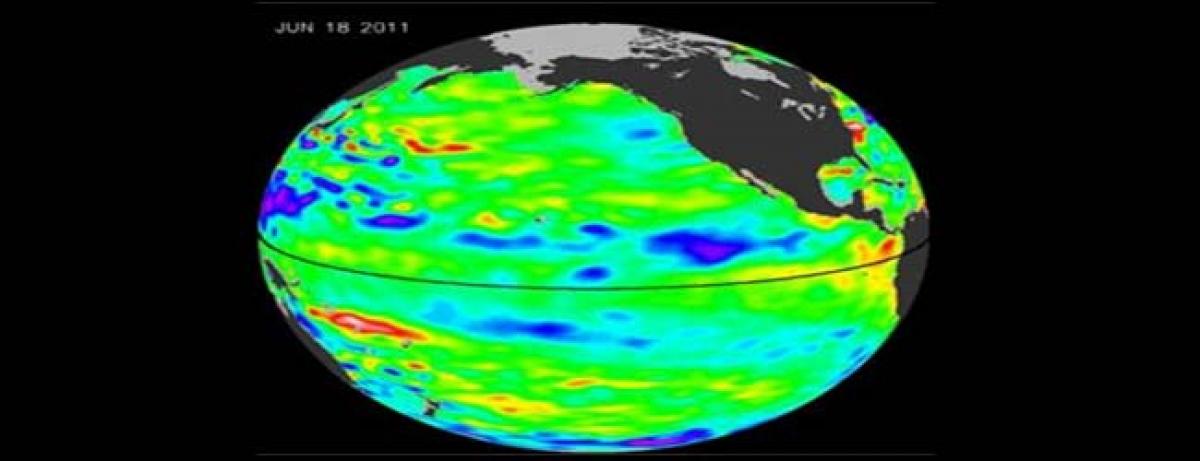Live
- Varun's appointment as AHUDA chief infused new vigour in JSP cadres
- Lokayukta, HRC will remain in Kurnool: Minister Bharath
- S Korea, US, Japan unveil secretariat establishment, slam N Korea-Russia on Ukraine war expansion
- Light to Moderate Rains Expected in Telangana and Andhra Pradesh
- Pilgrims throng Sabarimala temple on opening day of long festive season
- Jwala Thoranam held at Srisailam temple
- Birsa Munda Jayanti celebrated
- Another tigress released in soft enclosure in Similipal
- Coastal defence exercise on Nov 20-21
- Budget allocated for Perur reservoir rekindles farmers’ hope
Just In

Guess why Antarctica is not melting down even after such drastic human-driven climate change.
Washington D.C.: Guess why Antarctica is not melting down even after such drastic human-driven climate change.
New research finds that ocean currents explain why the seawater has stayed at roughly the same temperature in Antarctic Ocean, while most of the rest of the planet has warmed.
The study resolves a scientific conundrum, and an inconsistent pattern of warming often seized on by climate deniers.
Observations and climate models show that the unique currents around Antarctica continually pull deep, centuries-old water up to the surface, seawater that last touched Earth's atmosphere before the machine age, and has never experienced fossil fuel-related climate change.
"With rising carbon dioxide you would expect more warming at both poles, but we only see it at one of the poles, so something else must be going on," said lead author Kyle Armour.
"We show that it's for really simple reasons, and ocean currents are the hero here," she added.
Gale-force westerly winds that constantly whip around Antarctica act to push surface water north, continually drawing up water from below.
The Southern Ocean's water comes from such great depths, and from sources that are so distant, that it will take centuries before the water reaching the surface has experienced modern global warming.
Other places in the oceans, like the west coast of the Americas and the equator, draw seawater up from a few hundred meters depth, but that doesn't have the same effect.
The water surfacing off Antarctica last saw Earth's atmosphere centuries ago in the North Atlantic, then sank and followed circuitous paths through the world's oceans before resurfacing off Antarctica, hundreds or even a thousand years later.
Delayed warming of the Antarctic Ocean is commonly seen in global climate models. But the culprit had been wrongly identified as churning, frigid seas mixing extra heat downward.
The study used data from Argo observational floats and other instruments to trace the path of the missing heat.
The study used dyes in model simulations to show that seawater that has experienced the most climate change tends to clump up around the North Pole.
This is another reason why the Arctic's ocean and sea ice are bearing the brunt of global warming, while Antarctica is largely oblivious.
This study has been published in Nature Geoscience.

© 2024 Hyderabad Media House Limited/The Hans India. All rights reserved. Powered by hocalwire.com







